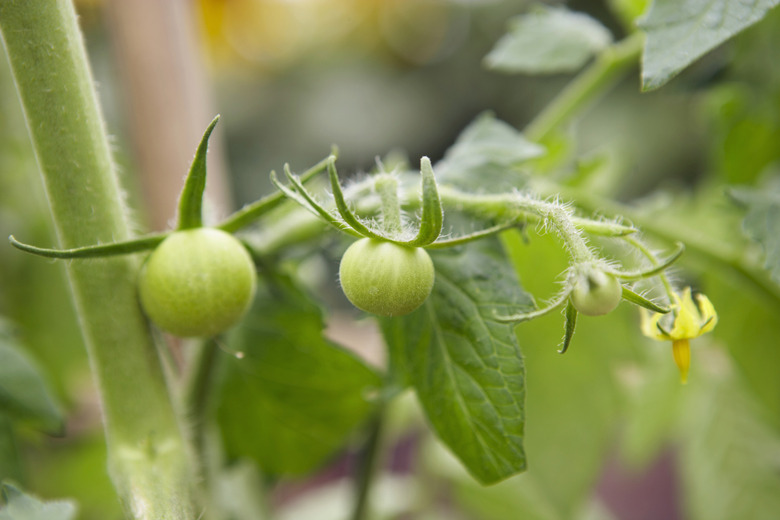Cures For Tomato Plant Fungus
We may receive a commission on purchases made from links.
Tomatoes (Lycopersicon esculentum, USDA zones 10-11) are easy to grow in your home garden, and the tomatoes always taste best when plucked fresh from the stem. The downside to growing tomatoes is that they can develop various types of fungal diseases that may harm the plant, resulting in a smaller harvest. If you notice that your tomato plant has developed a disease, don't lose hope, as there is most likely a cure to get your tomato plant back to its healthy state.
Signs of Tomato Plant Fungus
Signs of Tomato Plant Fungus
Tomato plants can develop diseases known as early blight, late blight and septoria leaf spot. You should be on the lookout for these diseases throughout the growing season. The disease that is easiest to spot right away would be the septoria leaf spot, as the visual signs are quite obvious. You will notice dark spots on the leaves, usually on the lower ones first, and these dark spots are usually settled in the middle of a yellow stain on the leaf.
Early blight and late blight are also easily noticeable, however, with late blight, you must check the undersides of the leaves. This is where the visual proof will be, as the underside of the leaf will have a white velvety appearance. Late blight can rapidly develop and cause your entire crop to die, so it must be taken care of as soon as it's discovered. Early blight resembles septoria leaf spot. The leaves develop rings that look like bulls-eye targets.
Cures for Tomato Plant Fungus
Cures for Tomato Plant Fungus
Treating your plants is a necessary step if you notice any signs of fungal disease. You can choose the fungicide route using commercially packaged products; however, you may want to try a home remedy first to avoid any type of chemical product coming into contact with the food that you will no doubt consume later. Luckily, creating a home remedy is rather simple and can be done with products already found in your home.
There is a quick concoction that can be made to fight and treat the fungus. This mixture can be applied often since there are no harsh chemicals. In 1 gallon of water, the U.S. Department of Agriculture advises mixing 1 tablespoon of baking soda, 1 teaspoon of vegetable oil and a bit of mild soap. Fill a spray bottle with the mixture and liberally apply it to the leaves. This mixture works by inhibiting fungal spores from germinating and impeding the spread of a fungal leaf disease.
Preventive Measures to Take
Preventive Measures to Take
There are ways you can help avoid diseases in your plants, and prevention is accomplished by the way you garden and care for your tomato plants. It's best to water your tomato plants at the base of the plant since water that remains on the leaves is a factor in the development of the above-mentioned diseases.
Watering with a sprinkler system or from the top is not always a bad way to care for your plants. However, if you choose this watering method, then it is best to water in the morning so that the tomato plants have time to dry throughout the day, ridding them of the moisture that allows diseases to take hold. If you notice any initial signs of disease, treat the infected plant and all nearby plants as a preventive measure. Remove any leaves or even entire plants that show symptoms so they do not infect the surrounding foliage.
